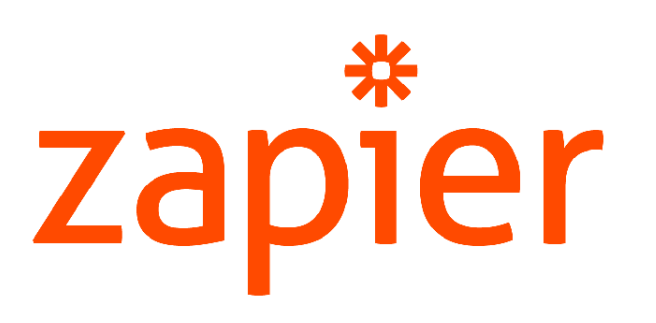What is Brand Messaging
Why Brand Messaging is Important
How to Create a Brand Messaging Framework
Examples of brand messaging frameworks
In 2024, making your business stand out is crucial. Brand messaging helps show what your business is about and connects you with people who might like what you offer. It’s all about sharing your story, what you believe in, and what makes you different.
This guide is for anyone starting a business or looking to refresh their brand. It’s full of useful tips and ideas to help you talk to your audience in a way that resonates with them. Let’s dive in and make your brand message clear and engaging.
Why Brand Messaging is Important
Brand messaging is important because it is the foundation upon which customer perceptions are built. It informs customer understanding of what the brand offers, why it matters, and how it aligns with their own values and needs.
Effective brand messaging fosters a strong brand identity, builds customer loyalty, and drives business growth by:
1. Establishing trust and credibility
Establishing trust and credibility with your audience is crucial for your brand’s success, especially in today’s market where consumers are more discerning and value-driven than ever before.
Research by Edelman shows that around 4 in 5 consumers need to trust a brand to consider buying from it, highlighting the significant role trust plays in purchasing decisions.
2. Differentiating the brand in a competitive market
Brand messaging that differentiates your brand is essential. Personalization plays a critical role in this, as data from SmarterHQ 72% of customers engage only with messaging tailored to them.
This approach not only meets customer expectations but also sets your brand apart, making it more memorable and appealing.
Personalization in brand messaging helps your brand stand out by showing customers that you understand and value their unique preferences, leading to increased loyalty and a competitive edge in the market
3. Guiding marketing strategies and content creation
Brand messaging is pivotal in guiding marketing strategies and content creation because it serves as the foundation for how a brand communicates its essence, values, and personality to its audience.
Just like developing language skills is crucial for personal communication, brand messaging helps a brand articulate its identity and connect with its audience on a deeper level. It defines what the brand stands for and how it wishes to be perceived, whether as an expert, fun, sophisticated, or friendly entity.
4. Influencing consumer decision-making processes
Brand messaging significantly influences consumer decision-making processes, data from marq show with 62% of consumers stating that a brand’s values heavily impact their purchase decisions. This highlights the importance of aligning brand messaging with the values and beliefs that resonate with the target audience.
By effectively communicating a brand’s core values through consistent and engaging messaging, businesses can foster a deeper connection with consumers, driving loyalty and influencing their buying choices. This data underscores the critical role of brand values in shaping consumer preferences and decisions in the marketplace.
How to Create a Brand Messaging Framework
Creating a brand messaging framework involves several key steps, each designed to delve deeper into the brand’s identity, audience, and market position:
1. Define Your Brand’s Core Values and Mission
Defining your brand’s core values and mission is a critical step in creating a brand messaging framework that resonates with your audience and guides your marketing strategies. Let’s delve deeper into this process with examples and guiding questions.
Core Values
Core values are the fundamental beliefs and principles that drive your brand’s culture, decisions, and actions. They should resonate with your target audience and be evident in every aspect of your business operations and communications.
Example: Patagonia’s core values focus on environmental sustainability and responsibility, which are reflected in their commitment to using recycled materials and reducing their carbon footprint.
This alignment of values with business practices helps Patagonia connect with eco-conscious consumers and differentiate itself in the market.
Questions to Define Your Brand’s Core Values:
- What principles are non-negotiable in the way we conduct our business?
- What beliefs drive our decisions and actions?
- How do we want our employees to describe our brand culture?
- Which values resonate most with our target audience?
Mission Statement
The mission statement articulates your brand’s purpose, outlining what you aim to achieve for your customers and the broader community. It should be concise, memorable, and inspiring, guiding your brand’s actions and decisions.
Example: Spotify’s mission is “to unlock the potential of human creativity—by giving a million creative artists the opportunity to live off their art and billions of fans the opportunity to enjoy and be inspired by it.”
This mission clearly communicates Spotify’s dual focus on supporting artists and providing value to listeners, making it a powerful guiding principle for the brand.
Questions to Craft Your Brand’s Mission Statement:
- What is the primary purpose of our brand beyond making a profit?
- Who are we here to serve, and how do we make their lives better?
- What impact do we want to have on our community or the world?
- How do we differentiate our purpose from our competitors?
2. Understand Your Audience
To create a brand messaging framework that resonates deeply with your audience, it’s crucial to have a comprehensive understanding of who they are.
Conducting thorough research to gather insights into your target audience’s demographics (age, gender, location, etc.), psychographics (interests, values, lifestyle), pain points (challenges and problems they face), and aspirations (goals and desires) is essential. This knowledge allows you to craft messaging that speaks directly to their needs, desires, and emotions, making your brand more relatable and engaging.
By tailoring your messaging to address specific pain points and aspirations, you can create a more personal and meaningful connection with your audience. This approach not only enhances the effectiveness of your marketing efforts but also fosters loyalty and trust among your customers.
For a detailed guide on creating buyer personas that can help you understand your audience better, visit Buyer Personas Guide. This resource can provide you with the tools and insights needed to develop accurate and actionable personas, which are critical for fine-tuning your brand messaging and overall marketing strategy.
3. Analyze Competitors
Examine how your competitors position themselves and communicate with their audiences. This will help you identify opportunities to differentiate your brand messaging.
To effectively analyze your competitors and refine your brand messaging, follow these steps:
a. Review Their Websites and Marketing Materials:
Look for the key messages they are promoting, their value proposition, and how they position themselves in the market.
b. Social Media Analysis:
Check their social media profiles to understand their tone of voice, customer engagement strategies, and content themes.
c. SWOT Analysis:
Conduct a SWOT analysis (Strengths, Weaknesses, Opportunities, Threats) for each key competitor to see where you can leverage your strengths or their weaknesses.
4. Craft Your Value Proposition
Crafting a compelling value proposition is essential for distinguishing your brand in the marketplace. It involves concisely communicating the unique benefits and solutions your brand offers to customers, addressing their specific needs and challenges.
A strong value proposition highlights why your product or service is the best choice and what makes it different from competitors.
To create an effective value proposition, focus on the following elements:
- Customer Needs: Identify the primary challenges or needs your target audience faces.
- Benefits: Clearly describe the benefits your product or service offers to address these needs.
- Differentiators: Explain what sets your offering apart from competitors, focusing on unique features, quality, or experiences.
- Proof: Provide evidence or testimonials that support your claims, enhancing credibility.
For a structured approach to developing your value proposition, consider using tools like the Value Proposition Canvas. This tool can help you visualize and align what you offer with what your customers value most.
For more guidance and a template to help you craft your value proposition, visit Value Proposition Canvas Template.
This resource offers a detailed framework to help you understand your customers’ needs and articulate your value proposition effectively.
5. Develop Your Brand Voice and Tone
Establishing a consistent brand voice and tone that truly mirrors your brand’s identity and connects with your target audience is crucial.
Your brand voice embodies the personality and values of your brand, shaping how you communicate across various platforms and touchpoints. The tone, while part of your brand voice, can vary depending on the context, channel, and audience’s mood.
To craft a brand voice and tone that resonates, start by defining the core attributes of your brand’s personality. Consider whether your brand is more formal and authoritative or casual and friendly, and how this aligns with your audience’s expectations.
For a step-by-step guide on developing your brand voice, including actionable tips and examples, visit guide on developing a brand voice in 7 easy steps.
6. Implement and Test
Implementing and testing your brand messaging across various marketing channels and customer touchpoints is a critical step in ensuring that your brand communicates effectively and resonates with your audience.
This process involves strategically applying your brand’s core messages, voice, and tone across all platforms where your brand interacts with customers, such as your website, social media, email campaigns, and advertising materials.
Once your brand messaging is in place, it’s essential to monitor its impact and how your audience responds. This involves collecting feedback from customers through reviews, comments, and direct interactions.
It also includes analyzing performance metrics, such as engagement rates, conversion rates, and sales figures, to understand how effectively your messaging is driving the desired actions.
Examples of Brand Messaging Frameworks
1. Zapier

Zapier’s brand messaging focuses on the convenience and simplicity of automating workflows between apps without the need for coding skills. This approach is particularly appealing to professionals looking to eliminate repetitive tasks and streamline their work processes. By emphasizing the ease of integration and the potential for increased efficiency,
Zapier successfully targets individuals and businesses aiming to optimize their productivity. The brand positions itself as a solution that not only saves time but also allows users to focus on more strategic and creative tasks, enhancing overall workflow efficiency.
For more insights into Zapier’s brand messaging and how it appeals to its target audience, you can visit their official website or explore reviews and case studies that highlight user experiences and the impact of using Zapier in various professional settings.
2. MacCoffee

MacCoffee’s brand messaging focuses on offering a rich and aromatic instant coffee experience that caters to large populations in Eastern Europe and Central Asia.
By being one of the first brands to introduce instant beverages in these markets, MacCoffee has leveraged its first-mover advantage to build strong brand equity.
Their consistent marketing campaigns have emphasized the quality and convenience of their instant coffee, making it a preferred choice in emerging markets. For more on MacCoffee’s branding strategies, you can explore further details here.
3. PropNex Singapore

PropNex Singapore’s brand messaging is built around trust, service excellence, and a commitment to enhancing customers’ quality of life. They emphasize their position as Singapore’s largest listed real estate agency, known for their extensive knowledge of the property market and a broad range of services.
Their tagline “Service You Trust” encapsulates their dedication to reliable and top-quality service, reflecting their vision to lead in every market they serve and their mission to add value through professional service.
Conclusion
In conclusion, effective brand messaging requires a delicate balance between clarity and creativity, ensuring your brand’s voice resonates and remains memorable.
For further guidance on developing a strong brand messaging framework that truly speaks to your audience, consider seeking insights from experts in the field. For more information and professional advice, contact us.
Related Articles
Let’s Talk!
If what you see here is relevant for you and can help you grow your business or organisation, we’d love to discuss further with you. Drop us a message or schedule an appointment with us.



